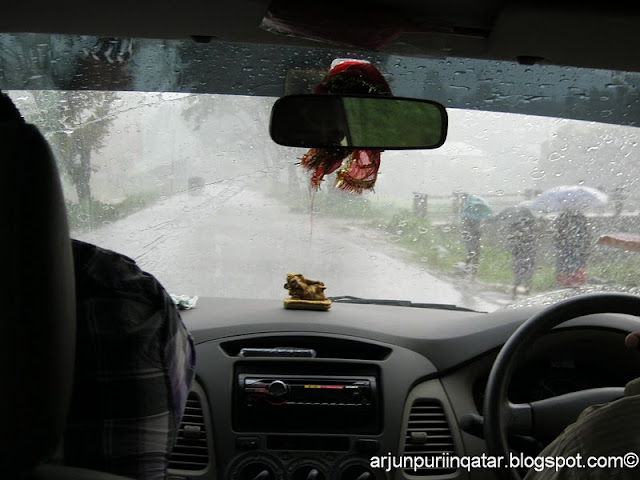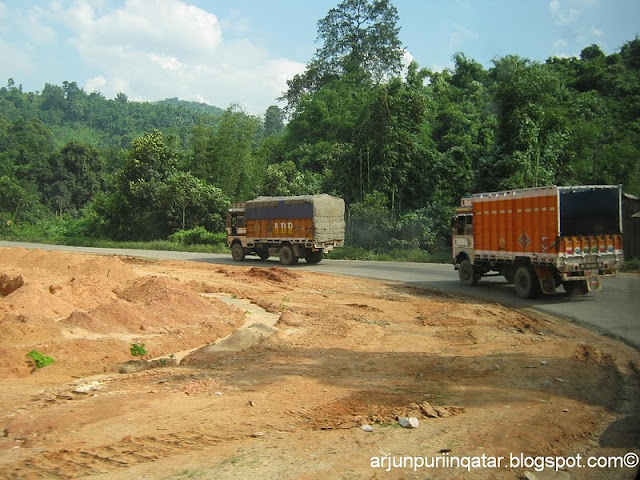Even before the effect of Umiam Lake faded away, we saw Shillong spreading out with its lush green undulating hills, cottages tucked in its folds with a sprinkle of old cathedrals and churches and localities with quaint names.
 |
|
 |
|
 |
|
At an altitude of 1,496 metre, this lesser known hill station is also called the ‘Scotland of the East’. Before the bifurcation, Shillong was the capital of Assam. According to one legend, U Shillong, a supernatural youth was born out of immaculate conception of a virgin mother named Lir U Shillong or the one who grows naturally, who is also the presiding deity of the city. The phrase ‘Khot Shillong’ (Call Shillong) is a prayer people here use in times of distress. Another legend says that the beautiful daughter of the Shillong deity became the ‘Pahsyntiew’ (lured by flower) Queen mother of the Shillong kingdom following her marriage to a local youth Kongor Nongiri. Whatever be it, there is no dispute that nature has blessed this city with towering pine trees and gurgling mountain streams, awesome waterfalls, mindblowing lakes and gorges and caverns.
 |
|
 |
|
 |
|
 |
|
 |
|
 |
|
As we entered the city, we saw the British legacy continuing in the architecture. Houses had slanting roofs, large number of windows and wooden floors, looking like a piece of art. Maybe it is a good idea to have a slanting roof as Shillong gets heavy rainfall during monsoon. Majority of the population comprises of Khasi tribe and we could also see Bengalis and Nepalis. The city reminded me of Coorg in Karnataka. If you have seen Madikeri you will not miss Shillong ;)
Shillong Airport is located at Umroi, about 40 km from the city. It is also known as Barapani Air Force Base or Umroi Airport. There are no rail lines in Meghalaya and the state is well connected with road transport.
Suraj warned us not to go out after 7.30 pm as all the men come out from their house. Let me tell you the reason more clearly. As I informed earlier, it’s a matriarchal society and women go out for work. Men stay back home and look after household chores and children. Women return home around 6.30-7 pm and men go out of the house. Because of this most of the shops and hotels also remain closed after 7.30-8 pm! After reaching Shillong, Suraj’s brother Guddu came to drive our car and he took us to our final destination, Hotel Ashutosh Inn, which was near Police Bazar, in the heart of the city.
 |
|
 |
|
 |
|
The hotel had no parking space and we had to rush as the car was standing on the main road. The driver helped us to get out our luggage from the vehicle and when these guys went to check in the hotel reception, the driver asked me: “Madamji, yeh log south India se hai kya?” (Are these people from south India). I said: “Yes, we all are from south India.” He continued, “Aapke Hindi se aisa nahi lagta, magar un logonke Hindi se maaloom padta hai ki who south se hai.” (Can’t make out from your Hindi, but can easily make out from their Hindi that they are from south India).
No comments:
Post a Comment